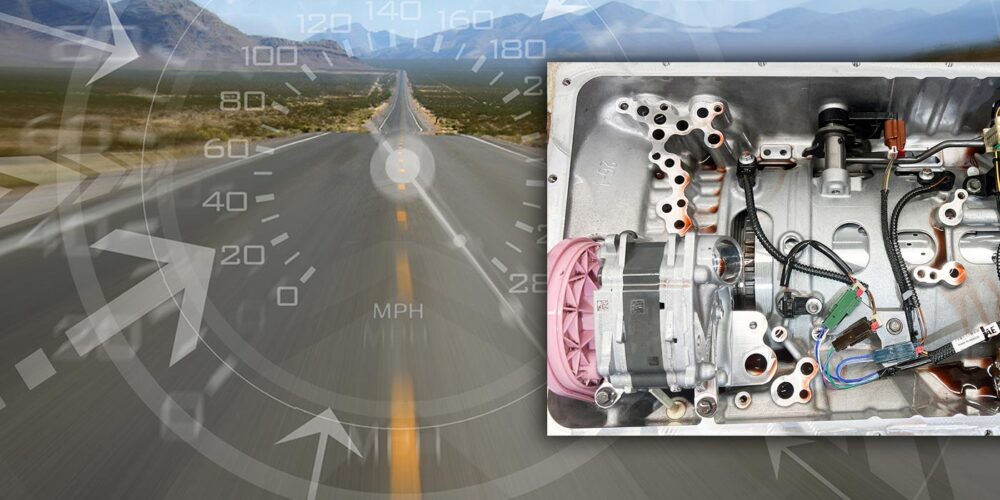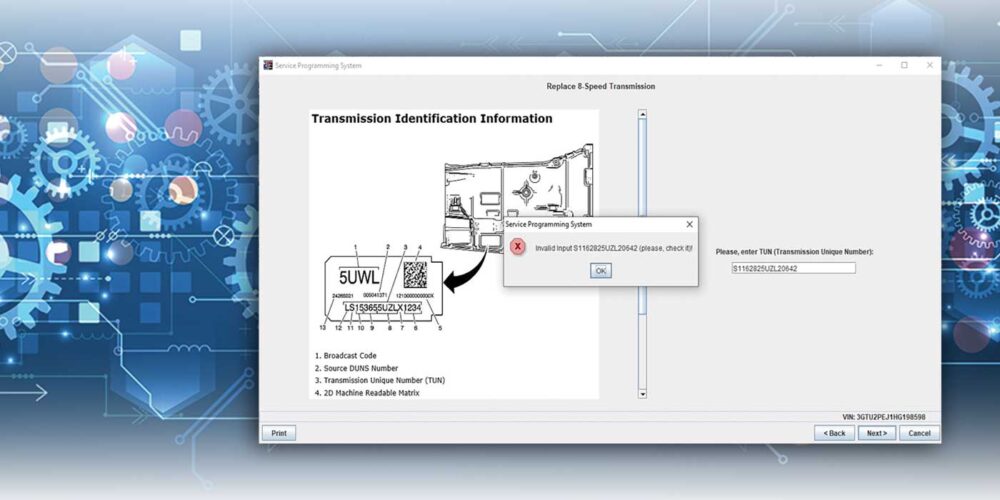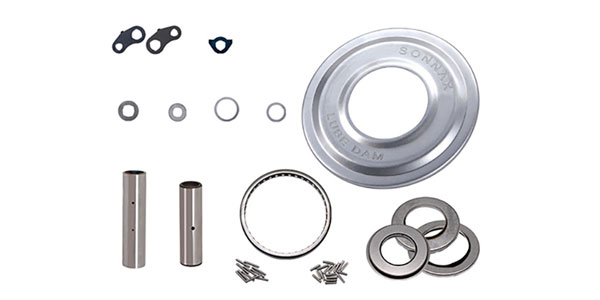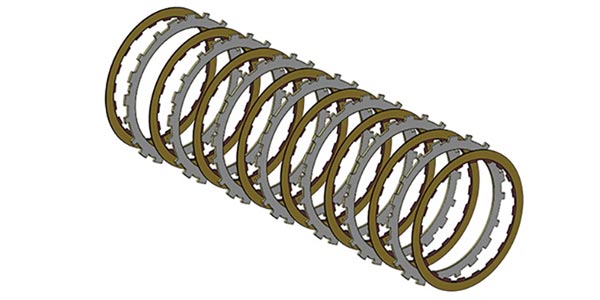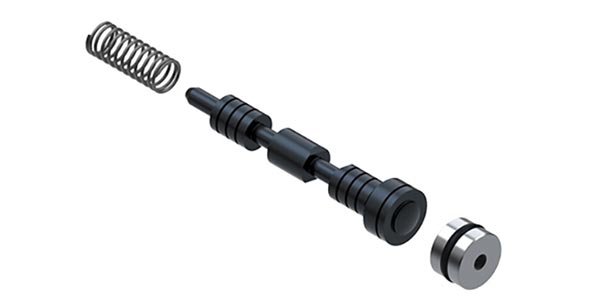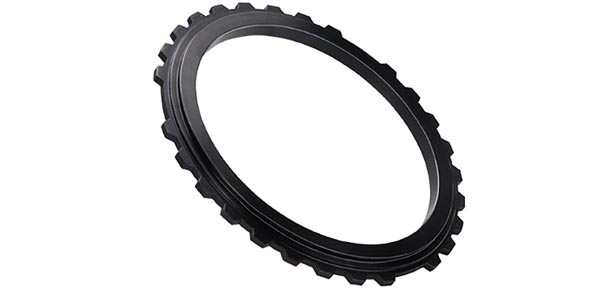Ford 10-speed 10R series transmissions utilize four two-wire, Hall-effect sensors — TSS, ISSA, ISSB and OSS — for providing speed signals to PCM or TCM. They are supplied nine volts by a PCM or TCM and assist in the control of clutch apply/release timing that is used in determining shift quality, including TCC.
Here are three conditions that you may experience with these sensors:
- TSS and ISSA sensor locations may be swapped during repair.
- OSS and ISSB sensor locations may be swapped during repair.
- You may discover that the embedded magnets in the P2 planet have deteriorated.
Figure 1 shows the correct speed sensor locations.
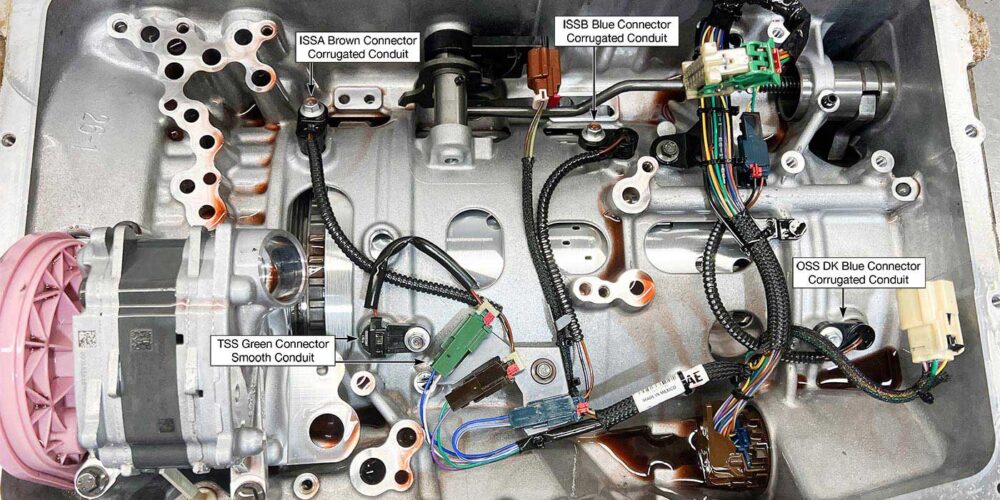
Diagnosing these conditions
It may seem overwhelming when suddenly the transmission is in a Neutral state and you have a code appear with MIL light on. However, the necessary clues to fix these conditions are usually present in the scanner data.
Connectors are different for each sensor so only location can be swapped. The scanner is your best mode of diagnosis: Simply pull up all the transmission PIDs (221+) and select specific PIDs below.
- Engine Speed (RPM)
- Turbine Shaft Speed-Raw (RPM) “TSS”
- Intermediate Shaft SpeedA-Raw (RPM) “ISSA”
- Intermediate Shaft SpeedB-Raw (RPM) “ISSB” – Typically available on engine data for some odd reason, but not usually necessary for this diagnosis.
- Output Shaft Speed (OSS)-Raw (RPM) “OSS”
- Gear Commanded
- Gear Ratio Measured
- Vehicle speed (MPH)
- Shift Type – There will be two “Shift Type” PIDs. Pick the “second” one, it will have data of the commanded condition and FMEM state.
Note: CDF drum issues cause ratio errors as well; this article is only about speed sensor issues.
For the first condition of TSS being swapped with ISSA, RPMs will be present on ISSA in Park and Neutral, but zero RPM on TSS, which is incorrect and opposite of the normal state. Code P0716 will quickly appear when a gear is selected, and the unit will usually be in a commanded Neutral state with MIL on. Normal operation is: TSS will have RPMs in Park/Neutral, and in Reverse or Drive it will have zero RPM. ISSA and ISSB do not have RPM when the vehicle is stationary.
With the second condition of the OSS and ISSB locations being swapped, the vehicle will typically drive and shift at first, but soon multiple gear ratio codes will appear and the MIL light will be on. “Shift Type” may indicate FMEM state as well as gear-commanded PID. Normal operation OSS should have unit correct ratios when dividing ISS by OSS using calculator or the PID gear ratio measured. If you are diagnosing a specific gear range, use the same methods.
Figure 2 shows the PID gear ratios.

The third condition is a faulty TSS RPM reading caused by magnets breaking apart on the P2 planet. The vehicle may only drive a short distance of 40 to 100 ft., leaving little to go on. Gear ratio codes and a Neutral state may be present also. After clearing codes, a short Snap-on scanner movie is all you get, and you can typically see incorrect ratio in first gear, after which it goes into a Neutral condition to protect itself. This could be an indication that the P2 planet magnets that serve as the trigger mechanism for the TSS Hall-effect sensor have broken apart, especially when most other parts have been replaced previously and location of sensors has been verified. You can use an ABS test strip to check the P2 planet magnets (see Figure 3). These strips are available via Amazon.
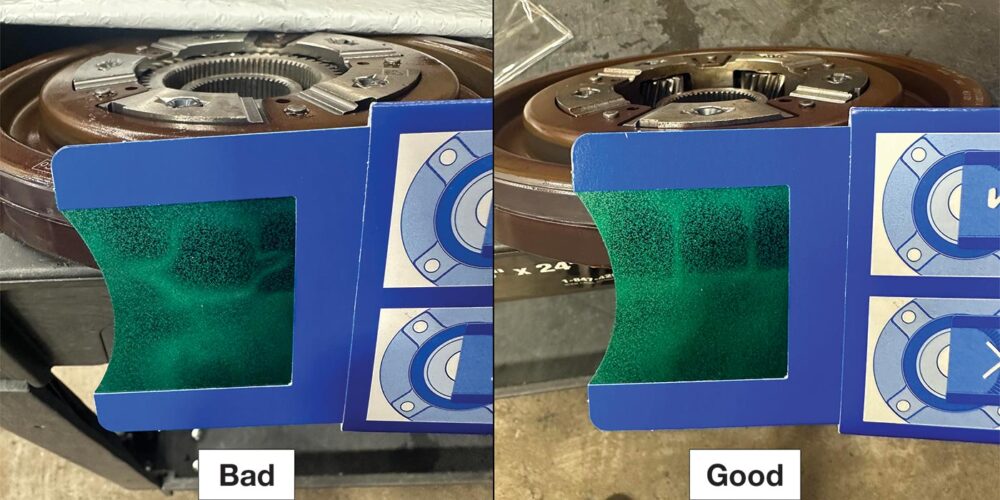
Thank you to Gregory Jelvik at AA Allstar Transmission in Tucson, AZ, and others for images and data.
Jim Mobley is a Sonnax technical communication specialist. He is a member of the Sonnax TASC Force (Technical Automotive Specialties Committee), a group of recognized industry technical specialists, transmission rebuilders and Sonnax Transmission Co. technicians.

